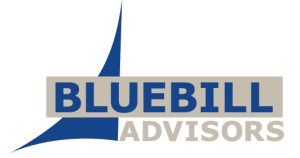Interwoven, Inc. announced its new Interwoven Turbo product family for rapid integration with eBusiness solutions. The Interwoven Turbo software products will accelerate time-to-Web by connecting eBusiness product suites through a standard set of integration points and by facilitating content re-use across applications. Joint customers will now benefit from access to the latest product functionality as Interwoven Turbo keeps pace with upgrades to TeamSite and partner products. Initially, Interwoven Turbo will be available for application servers, personalization servers and commerce servers from ATG, BEA Systems, IBM, iPlanet and Microsoft. With the Turbo product family, Interwoven gives enterprises a head start on developing, managing and deploying compelling Web properties and also reduces implementation cycles by standardizing its support for leading eBusiness application suites. As TeamSite and partner products are enhanced, Interwoven Turbo will provide a reliable upgrade path, ensuring that enterprises will continue to have access to new features and technologies. For product availability see www.interwoven.com/products/turbo.html.
Page 775 of 935
Macromedia, Inc. and Allaire Corporation announced a definitive merger agreement. The combined company will unite the Web design and development communities and enable Web professionals to efficiently build the look of a Web site and the application logic behind it-creating the best possible user experience across multiple devices. The transaction, valued at approximately $360 million on a fully-diluted basis, brings together market server, authoring and playback software to make Web development more efficient, affordable, and accessible. Under the terms of the definitive merger agreement unanimously approved by each company’s board of directors, Macromedia will acquire Allaire. Rob Burgess, chairman and CEO of Macromedia, will continue as chairman and CEO of the combined company, which will retain the Macromedia name. Jeremy Allaire, CTO of Allaire, will be the CTO of Macromedia, reporting to Kevin Lynch, president of Macromedia products. The combined company will evolve its Web development platform with support for open industry standards. The first step is to deliver on Allaire’s plan to bring the development model of ColdFusion to J2EE. This will enable an approachable, productive solution for building applications on the Java platform using technologies such as XML and JSP. The next step will be to develop a set of application services-reusable components and application logic-that enhance the major software platforms including Java and Microsoft .NET. In the merger, Macromedia will exchange 0.2 shares of its stock and $3 in cash for each Allaire share. The merger will be accounted for as a purchase combination and is expected to be accretive in Macromedia’s fiscal year 2002. This transaction is subject to certain closing conditions, including regulatory approvals and the approval of the Allaire shareholders, and is expected to close by the second calendar quarter of 2001. In connection with the merger agreement, Allaire has granted Macromedia an option to acquire 19.9 percent of Allaire’s stock, exercisable in certain circumstances. www.allaire.com, www.macromedia.com
Software AG Inc. and thinkXML Inc. have entered into a partnership to integrate Software AG’s Tamino native XML database with thinkXML2000. The combination offers organizations worldwide, engaged in electronic business, a mechanism to simultaneously manage their Web interface and their data store, enabling them to rapidly create XML-based data management systems. Traditionally, form and data schemas are maintained separately and map files must be created whenever a form or database schema changes. The Software AG – thinkXML offering allows users to create a dual-purpose data structure in the thinkXML2000 Management Console without having to maintain a map file. The thinkXML2000 Transaction Server routes and processes data-rich XML transaction documents directly to Tamino. The thinkXML2000 Transaction Manager for Tamino, now in beta testing, provides enterprise intelligence, scalability and streamlined monitoring that enable users to ensure predictable service levels and response times. Using Tamino’s rich reporting and data extraction capabilities and its XQL (XML Query Language) query engine, the thinkXML Transaction Manager for Tamino enables users to search and view logs; complete transaction audit trails and schema transformations; edit a new instance of a transaction inside the original, populated dynamic Web forms; and repair and replay failed transactions instantly. www.softwareagusa.com, www.thinkxml.com
ecVision announced its new service provision, XpressB2B iDX. This affordable, XML-based document exchange service supports EDI, which is critical to retailers and brand merchandisers in managing their sourcing processes over the Internet. A solution for retailers seeking to replace its Value-Added Networks (VANs), XpressB2B iDX is a service that is fully encrypted and offers all the specialized features and security of a traditional VAN along with the fast implementation and low cost of the Internet. XpressB2B iDX brings secure multipoint-to-multipoint document exchange services to retailers who need to source internationally, and is fully supported in Spanish and Chinese software environments. Furthermore, XpressB2B iDX’s scalability makes it an ideal document exchange service for mid-to-large size retailers, who need to process billions of dollars worth of documentation for sourcing. In addition to the fast implementation, low cost, and security benefits of XpressB2B iDX, users will also be able to enjoy all the features they would expect from a VAN including mail boxing, security and audit control. Other features of XpressB2B iDX include: an Internet-based EDI document exchange center for sending and receiving any type of files such as EDI, non-EDI, binary, text, or XML; non-repudiation support; secure channels and environments for messaging interchange over the Internet; message archival and retrieval; and multi-language support. XpressB2B iDX is currently available throughout The Americas and Asia Pacific. For an average transaction of 6000 documents, XpressB2B iDX is priced at $2,000(US). www.ecvision.com
SAPMarkets, the SAP AG subsidiary announced the launch of Open Content Network, a global program for content providers that delivers multi-supplier catalogues from a single source. This initiative in the field of electronic catalogue and content management will fulfill the needs of e-marketplace operators, buyers and sellers simultaneously. Based on a network of partners, the Open Content Network will provide high quality content and content services. This distributed architecture guarantees that a reliable flow of high quality content, including regional specificities, will be available from a single source. SAPMarkets also announced that Content Europe, the European-based provider of technology and services for content management, is the founding European member of Open Content Network. The two companies have signed a memorandum of understanding to develop an open content management solution by combining their expertise in the field of multi-standard content management. The goal of the partnership is to create, merge, manage and publish generic supplier content in accordance with e-marketplaces and large buyers’ requirements. www.sapmarkets.com, www.contenteurope.com
Interwoven, Inc. and Blue Martini Software, Inc. entered into an agreement by which Blue Martini Software will resell a tightly integrated version of Interwoven TeamSite software. The alliance and combined solution will provide customers with a content management platform to accelerate the development and deployment of content for Web sites and other touchpoints driven by Blue Martini’s catalog management, personalization, analysis, marketing and commerce applications. For Blue Martini customers, the combination will extend Blue Martini Software’s existing content and catalog management capabilities with Interwoven TeamSite content management solution. Interwoven customers will now have the ability to leverage their investment in TeamSite to manage and deploy content for applications powered by Blue Martini. In addition to Blue Martini Software reselling TeamSite, both companies will market the integration software to customers that have already made investments in either company’s applications. Interwoven TeamSite supports complex content management tasks including collaborative, concurrent, multi-author content development involving diverse web assets such as HTML, application code, multimedia and with the integration, will support Blue Martini business rules. Blue Martini driven Web sites will now be able to take advantage of TeamSite Templating, virtualization and workflow. Interwoven customers will be able to benefit from the catalog management, personalization and pervasive distribution of content across multiple touchpoints offered by Blue Martini applications. The integrated solution is expected to be generally available at the beginning of the second quarter of 2001. Pricing information is available directly from Blue Martini Software. www.bluemartini.com, www.interwoven.com
Percussion Software announced a partnership with GlobalSight Corporation. The integration of Percussion’s Rhythmyx Content Manager, a native XML content management system, and GlobalSight System3 allows multinational companies to develop and maintain Web sites in the language and culture of target markets worldwide. A major barrier to global e-business success is the difficulty in delivering compelling and timely multilingual information to buyers and partners worldwide. As a result, content must be customized to address differences in language, culture and local business practices for each market. To address these complexities, companies must efficiently acquire and localize content from multiple sources, data formats and languages. Together, Rhythmyx Content Manager and GlobalSight System3 enable companies to acquire content from any source in any format and transform that content for any delivery mechanism. With the workflow capabilities in the Rhythmyx/System3 solution, multinational companies can effectively create and automate the global content approval process, including the translation of that content into multiple languages. All the linguistic, technical, organizational, and managerial challenges in overseeing multilingual, multicultural content are addressed, enabling businesses to successfully compete in the global marketplace. www.percussion.com, www.globalsight.com
MERANT announced a definitive agreement to acquire the Enterprise Division of NetObjects for U.S. $18 million (approximately (pound)12 million pounds sterling) payable in cash on completion, which is anticipated to take place by March 2001. The value of the net assets, subject of the transaction, are $2.2 million U.S. dollars. In the year-ended September 2000, the Enterprise Division generated approximately $10 million U.S. dollars in revenue and the loss attributable to the net assets being acquired amounted to $7.6 million. The approximately 40 employees of the Enterprise Division will become MERANT employees. As part of this transaction IBM, a substantial owner of NetObjects, will be making a limited equity investment in MERANT on the open market after the transaction closes to demonstrate its commitment to MERANT. With this strategic acquisition, MERANT will offer a solution from a single provider to manage the entire e-business assets of the enterprise. The acquisition enhances MERANT’s Egility Enterprise Change Management solution by embracing the convergence of applications and web content. The combination expands MERANT’s offering of traditional software configuration management with web content management. www.merant.com

